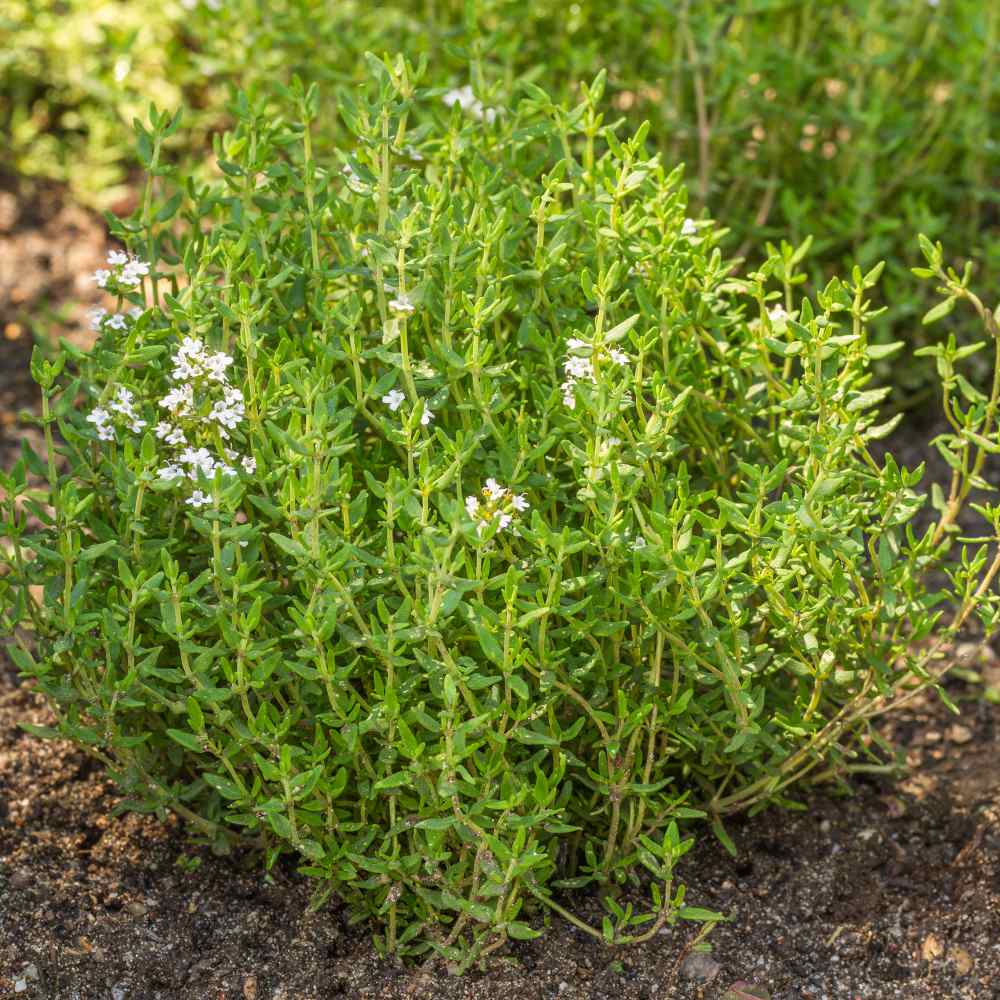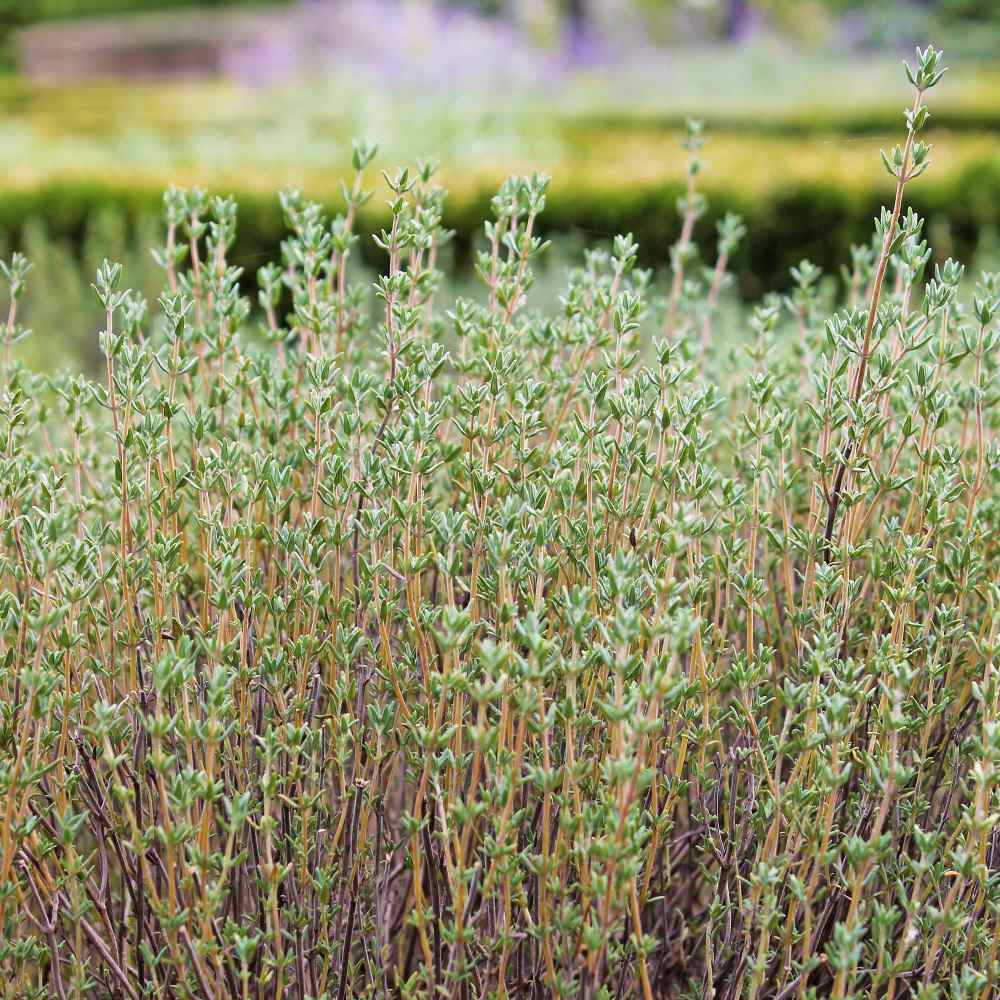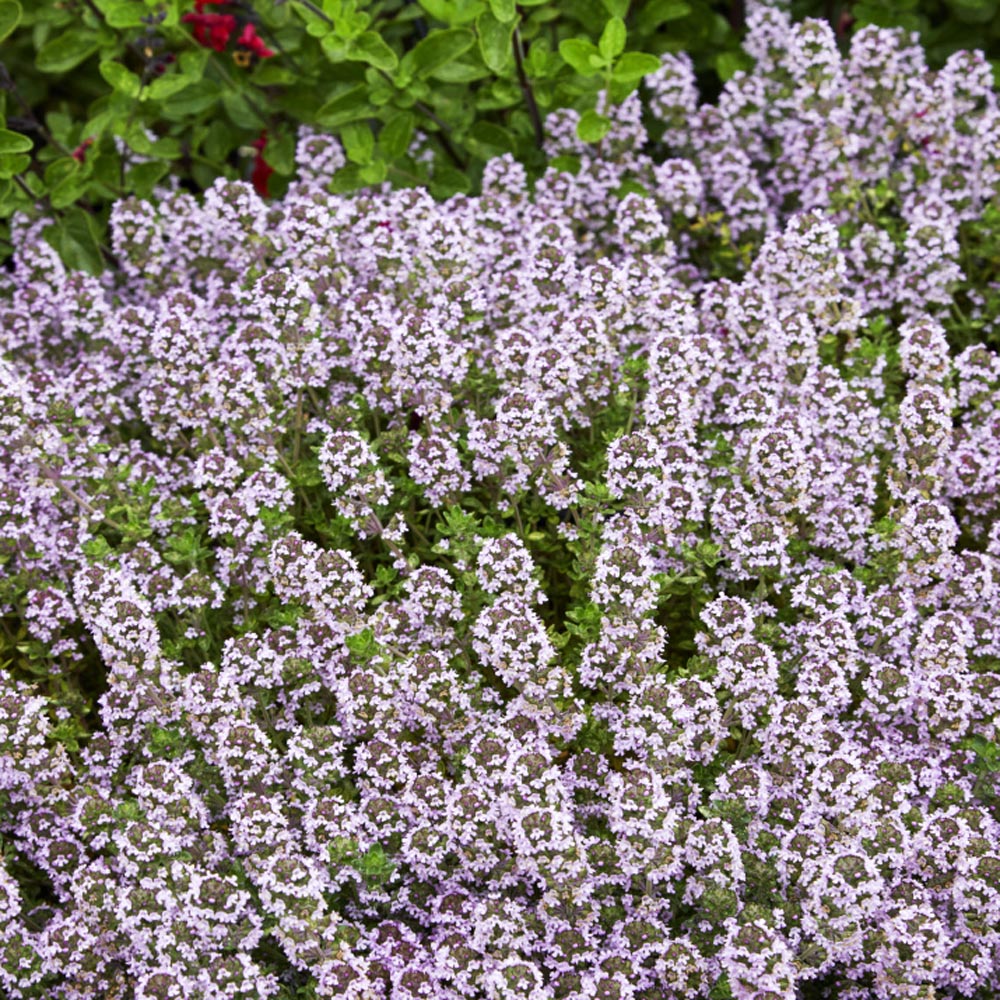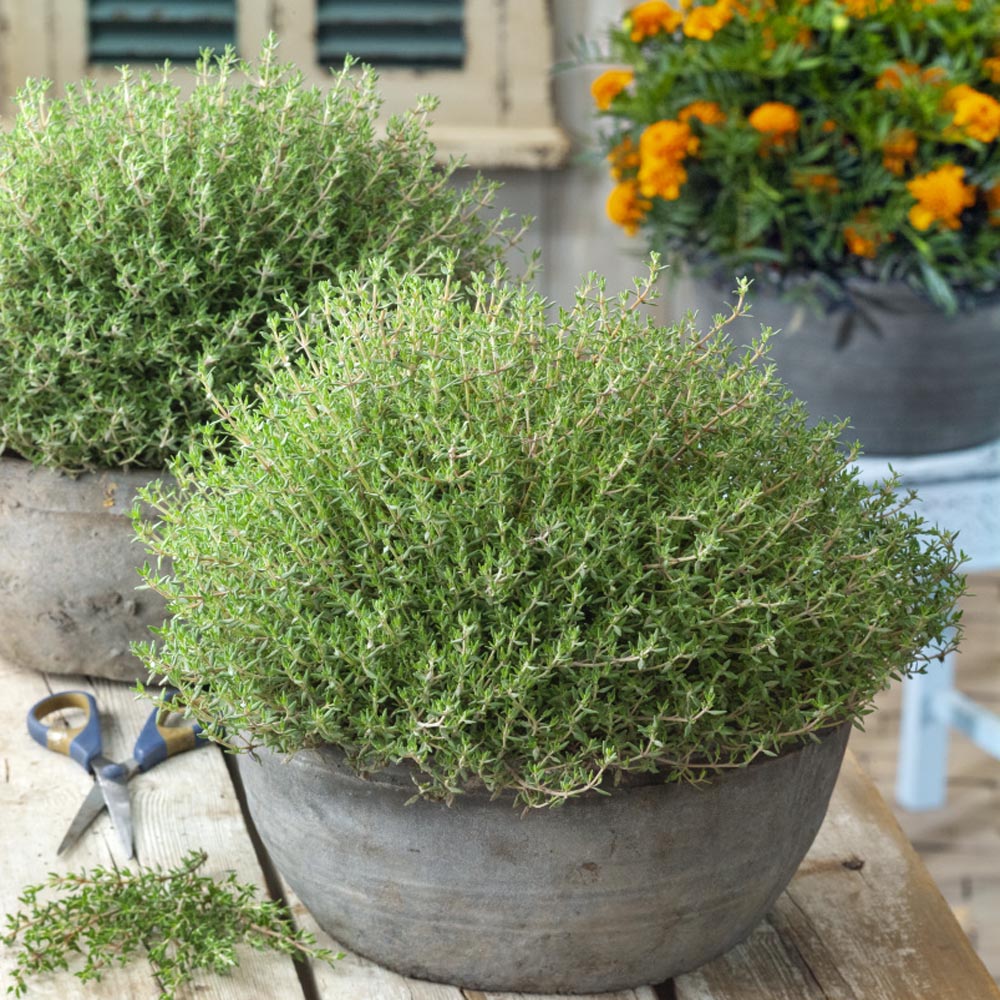Thyme Seeds

Herb Specifications
Season: Perennial
USDA Zones: 4 - 8
Height: 12 - 18 inches
Bloom Season: Summer
Bloom Color: Rose
Environment: Full sun to partial shade
Soil Type: Moist, well-drained, pH 6.6 - 7.8
Deer Resistant: Yes
Latin Name: Thymus Vulgaris
Planting Directions
Temperature: 70F
Average Germ Time: 21 - 28 days
Light Required: Yes
Depth: Press seed onto surface of soil, do not cover seed
Sowing Rate: 1 seed per inch
Moisture: Keep moist until germination
Plant Spacing: Rows 18 inches a part; thin seedlings 8 - 12 inches





Thyme (Thymus Vulgaris) - Growing Thyme herb plants is fun and rewarding, and this long-lived perennial herb is a mainstay of American cuisine! Thyme herb is found in recipes for almost everything including fish, chowders, sauces, stuffings, soups, meats and poultry. The aromatic, warming flavor holds up well during long cooking times. Thyme also makes an attractive plant for the herb garden. Grown from Thyme seeds, this plant produces small gray-green leaves and tiny summer blooms. It is not only attractive in the perennial border or herb garden, but it also attracts birds, bees and butterflies to the garden as well. It is also commonly referred to as Garden Thyme or English Thyme.
English Thyme plants reach 12 - 18 inches in height and 24 inches in width. They are woody perennial shrubs. The narrow stems are lined with tiny gray-green leaves and topped with equally tiny white to pale rose colored flowers in summer.
How To Grow Thyme From Herb Seeds: To establish Thyme from seeds, sow the herb seeds indoors on sterile starting mix 6 - 8 weeks before last frost. Keep the Thyme seeds moist until germination. Once frost season has passed transplant the Thyme seedlings into the garden in a sunny location. Do not over water Thyme. It likes to dry out in-between waterings. Thyme herb plants dislike wet foliage, so surrounding the plant with a layer of gravel can help this. This variety of Thyme is often planted near vegetables to help control flea beetles and several cabbage pests.
Approximate seeds per ounce: 100,000































